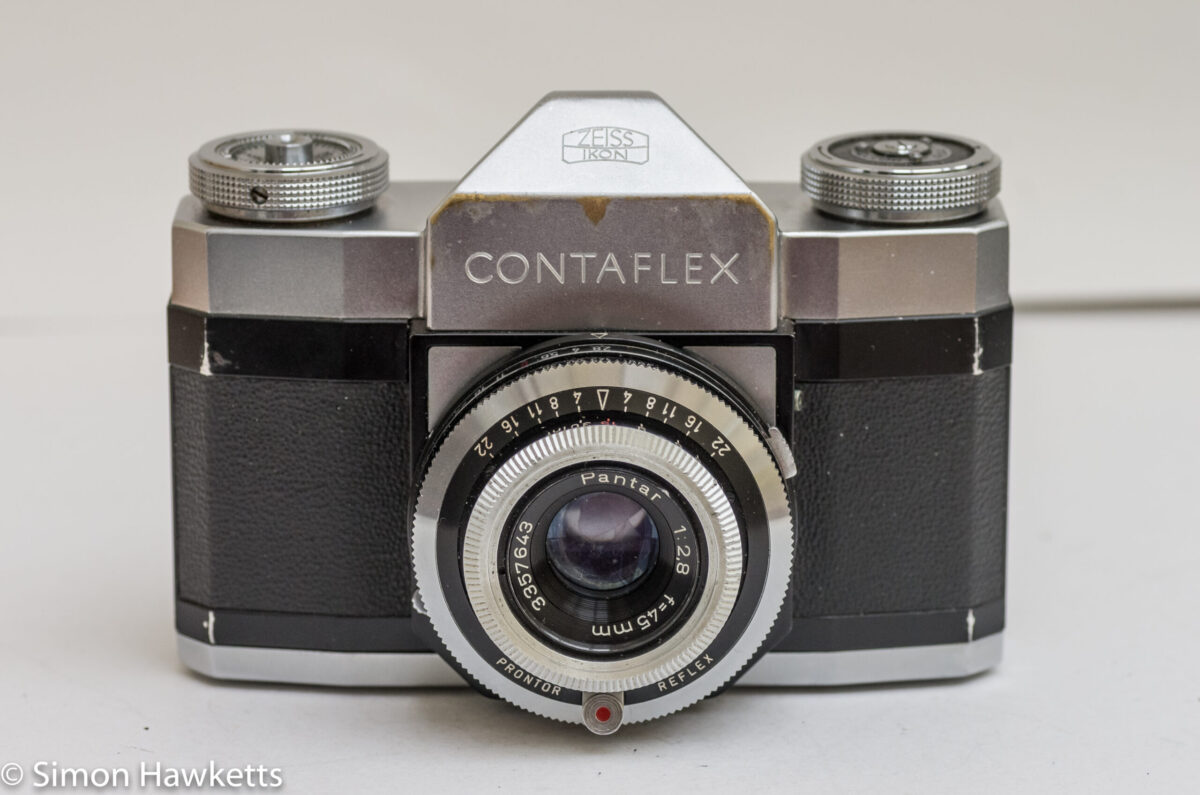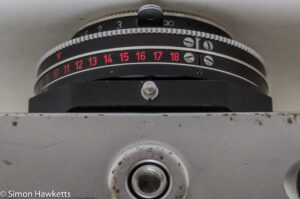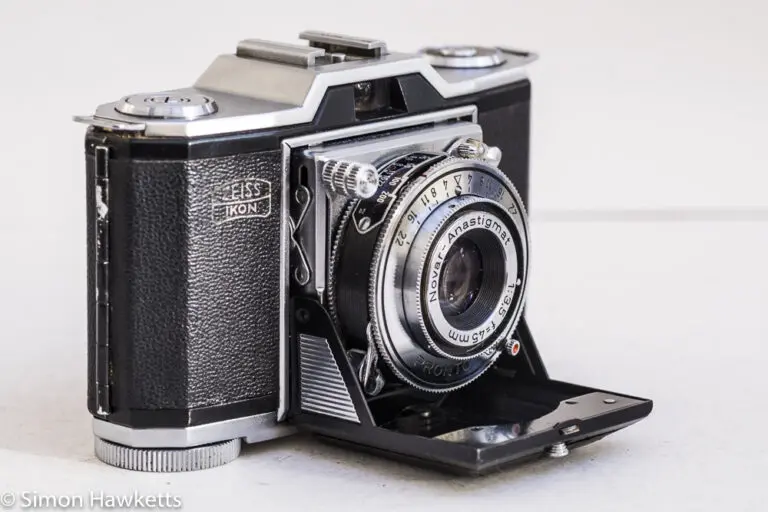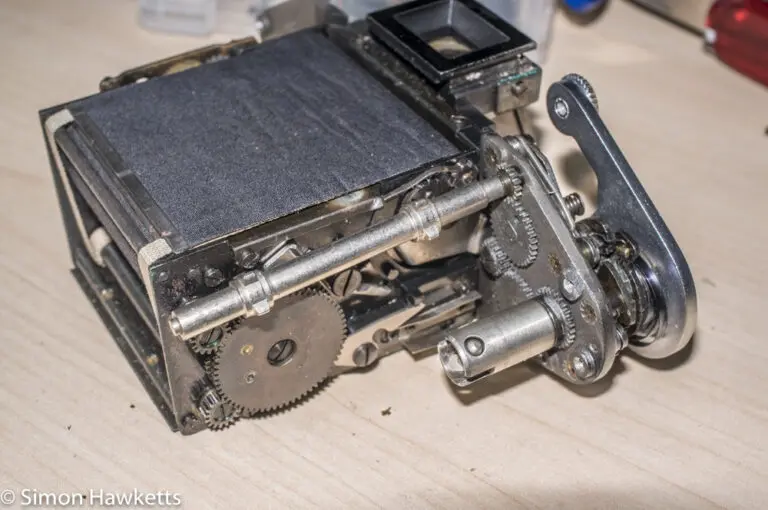Zeiss Ikon Contaflex Alpha
The name Zeiss Ikon is somewhat iconic in camera manufacture and the Contaflex series was one of their longer running models. I had only one Zeiss in my collection, a Contina, and I decided it was time I added to that, and so I purchased a Zeiss Ikon Contaflex Alpha in a non-working state.
Zeiss Ikon Contaflex Alpha Images
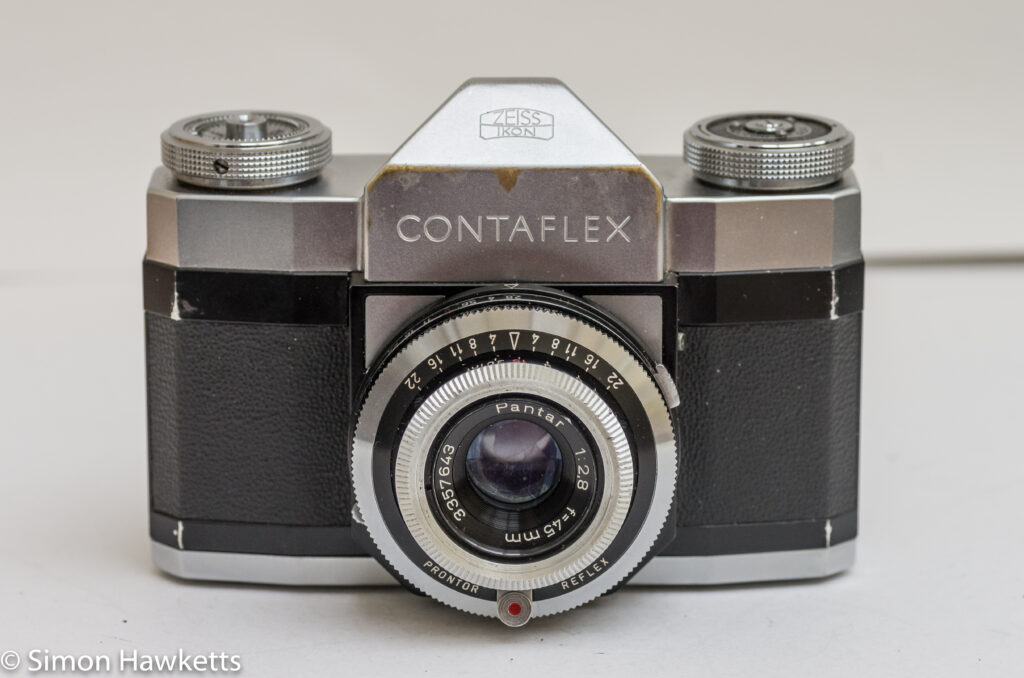
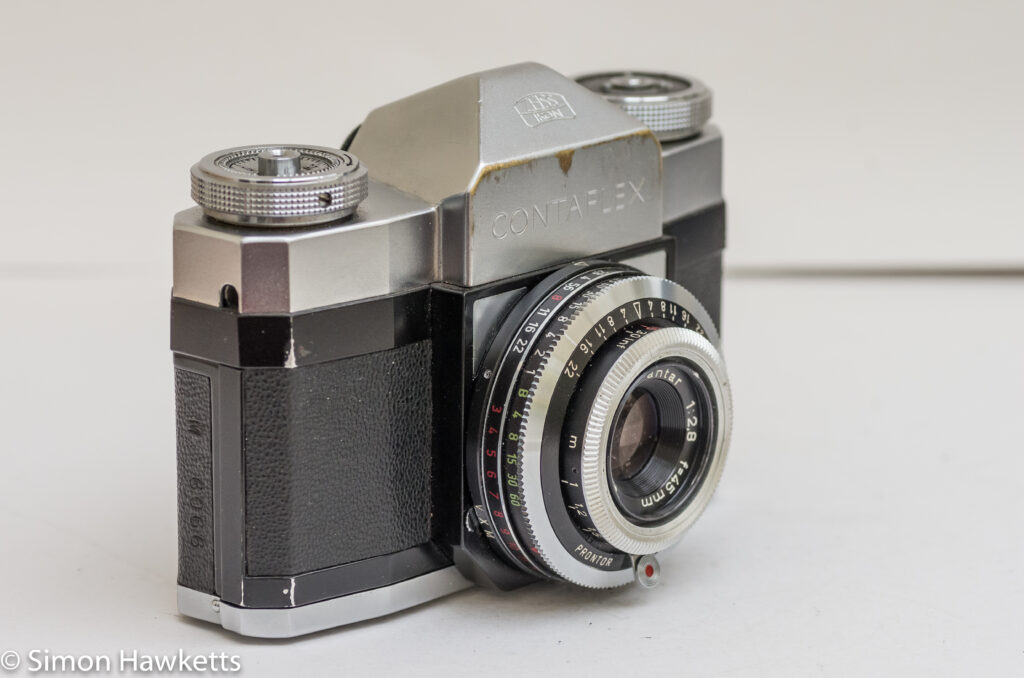
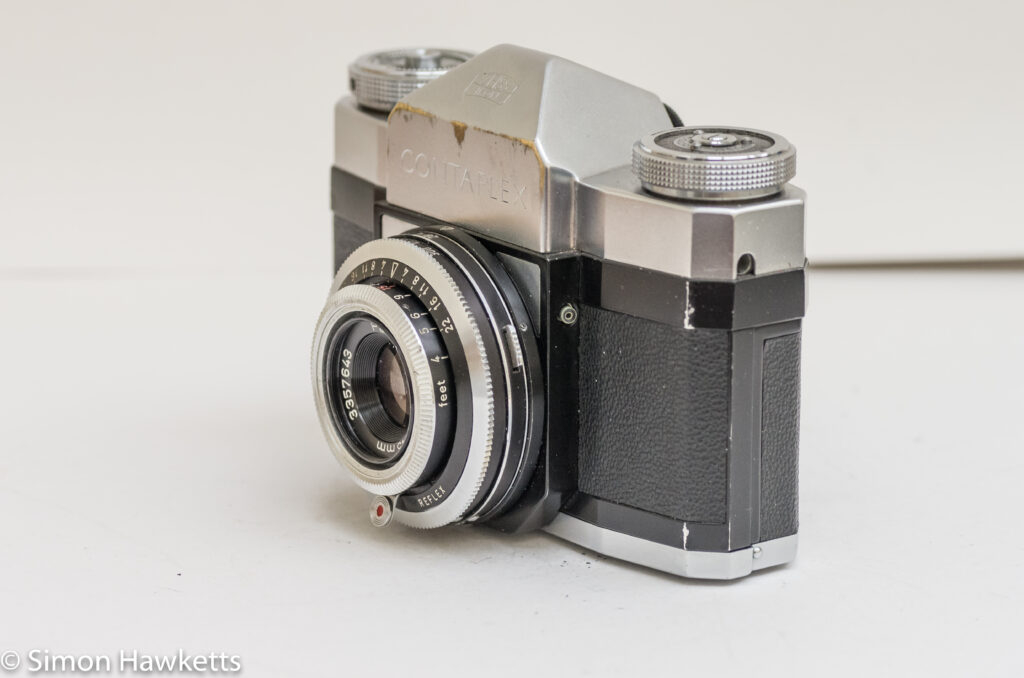
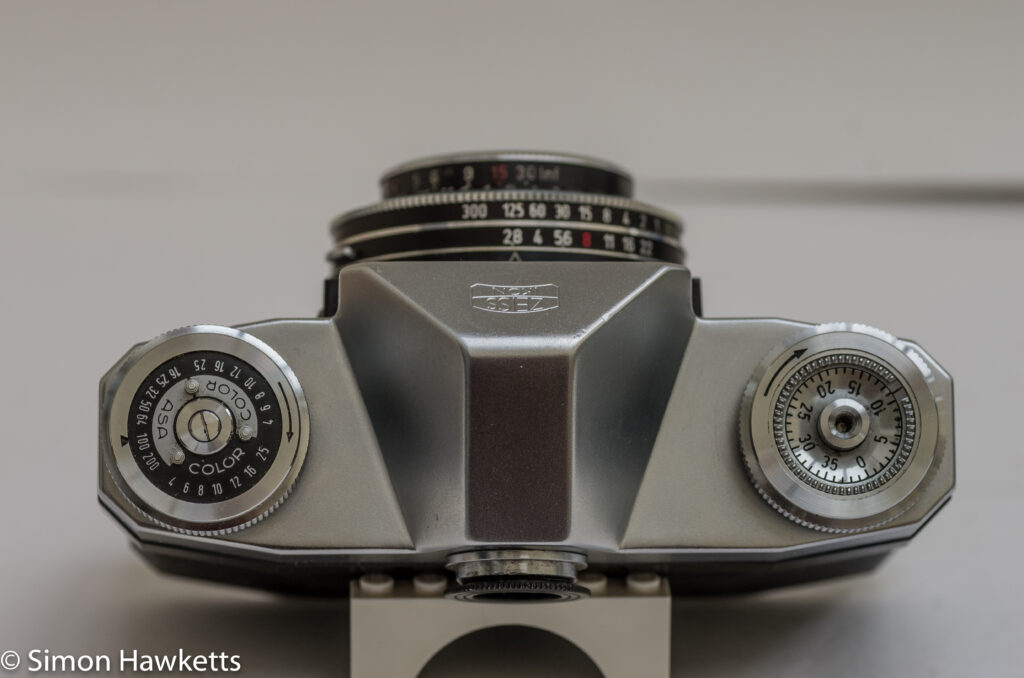

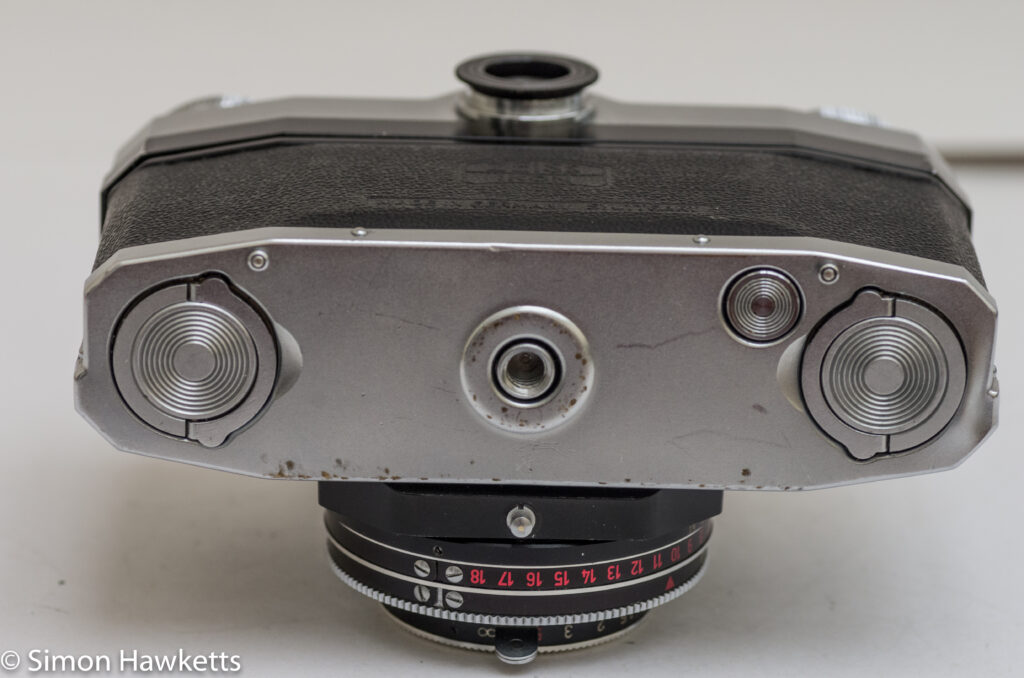
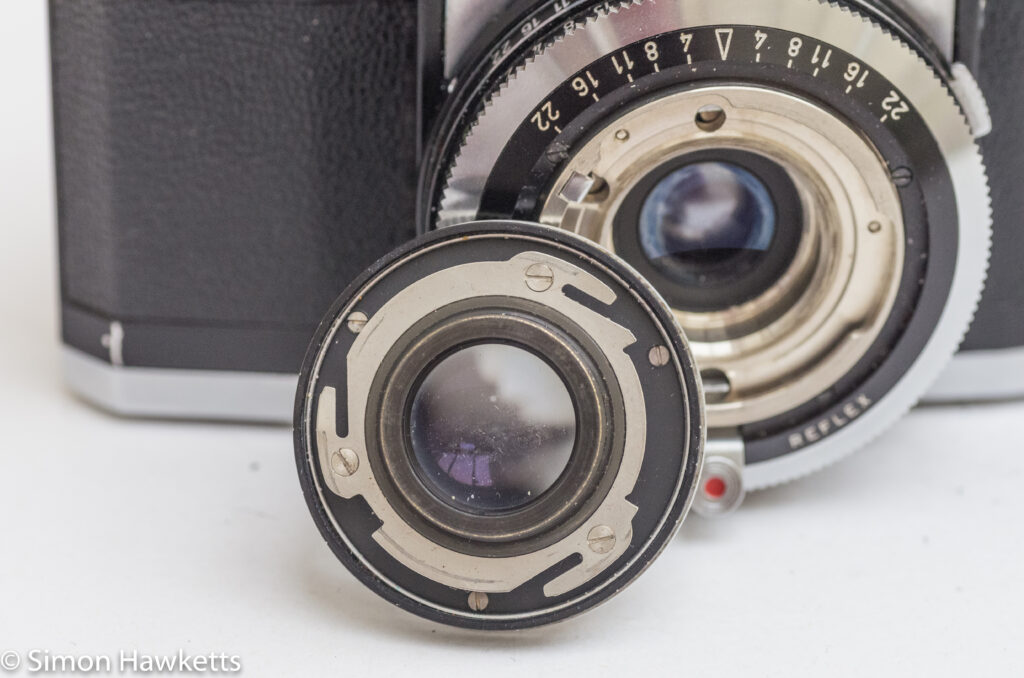
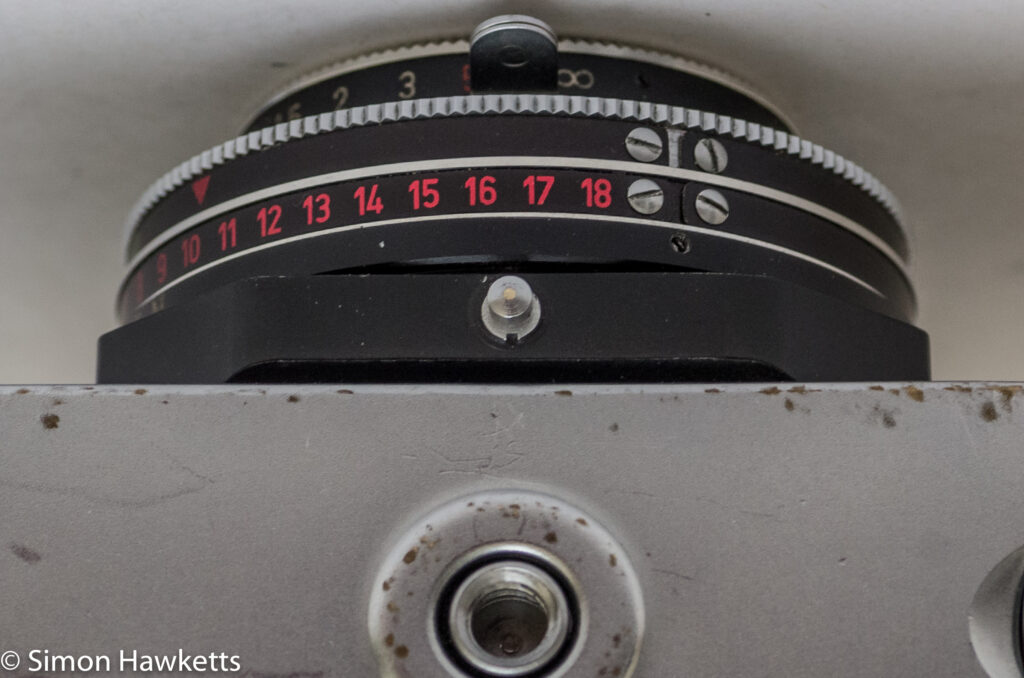

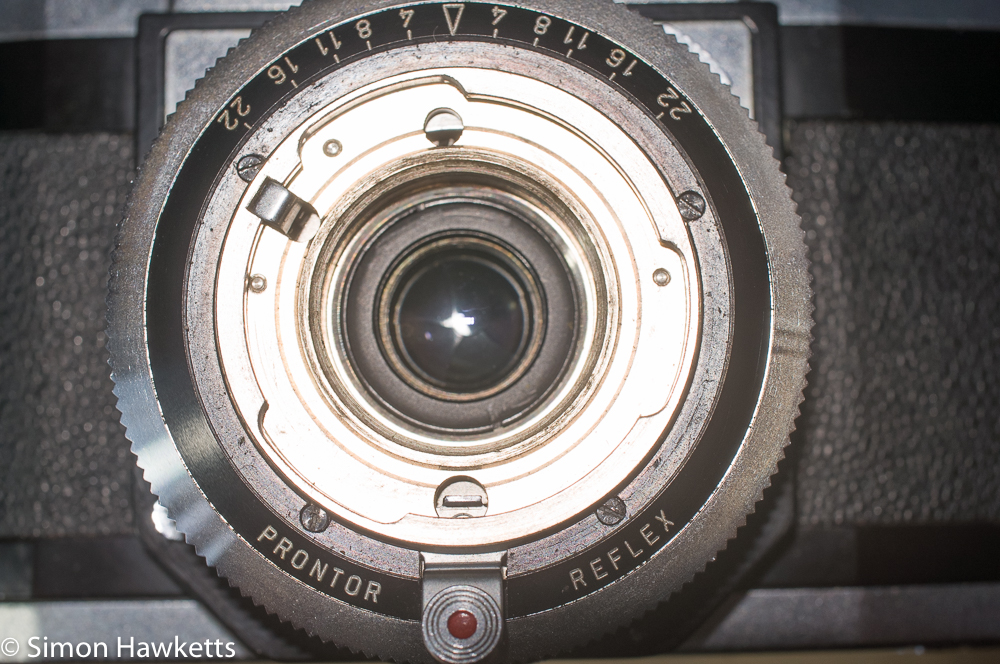
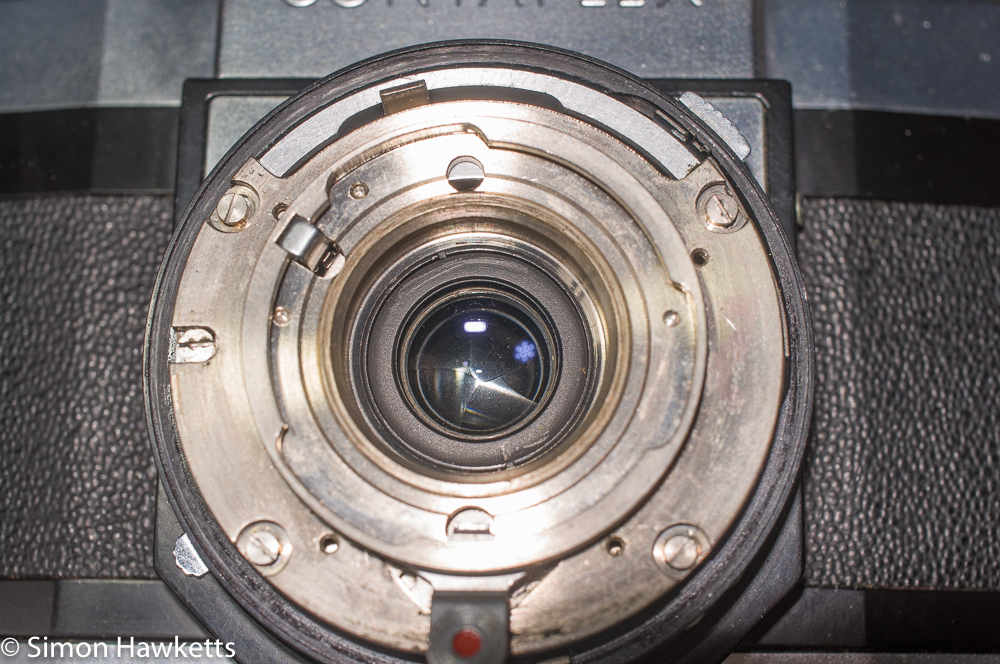
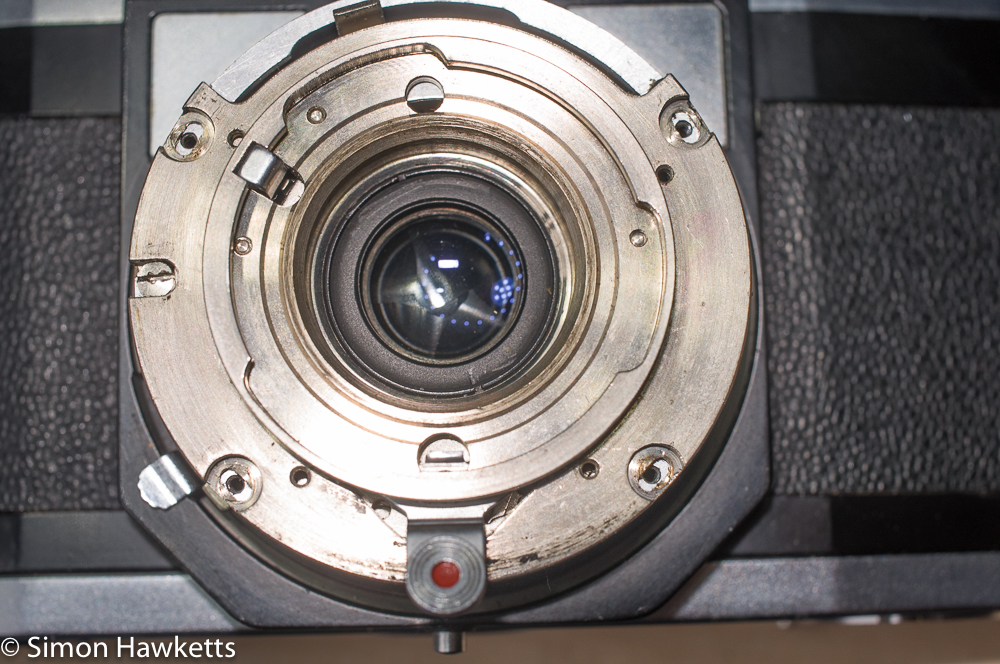
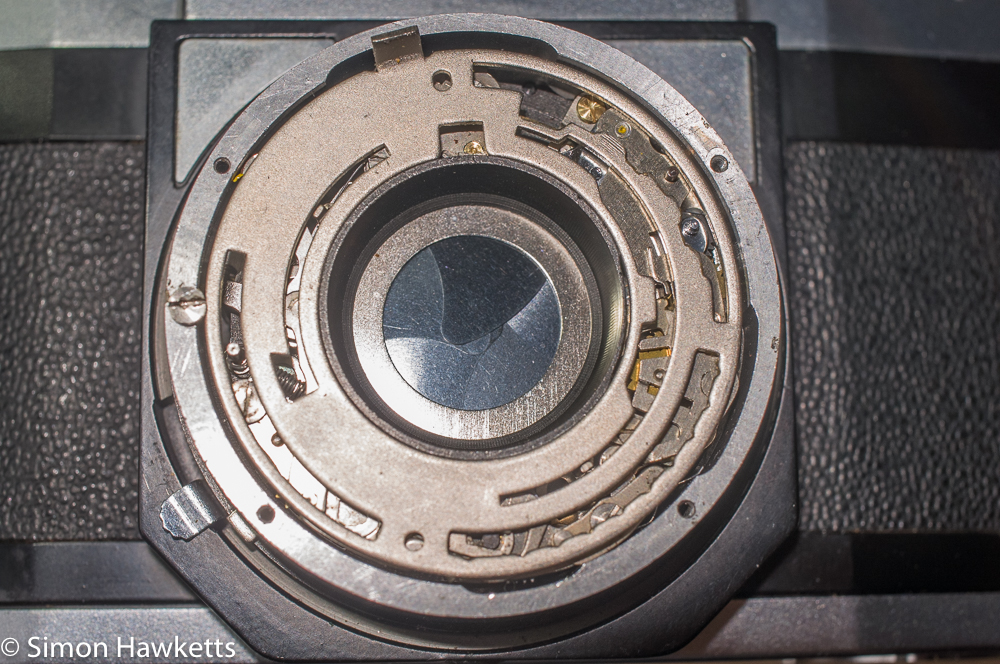

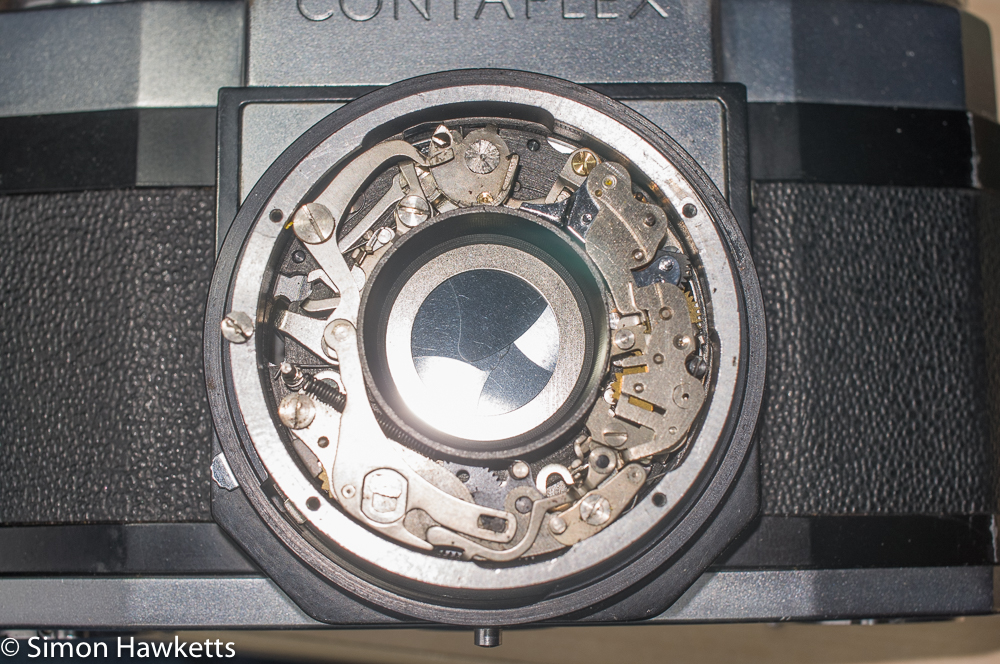
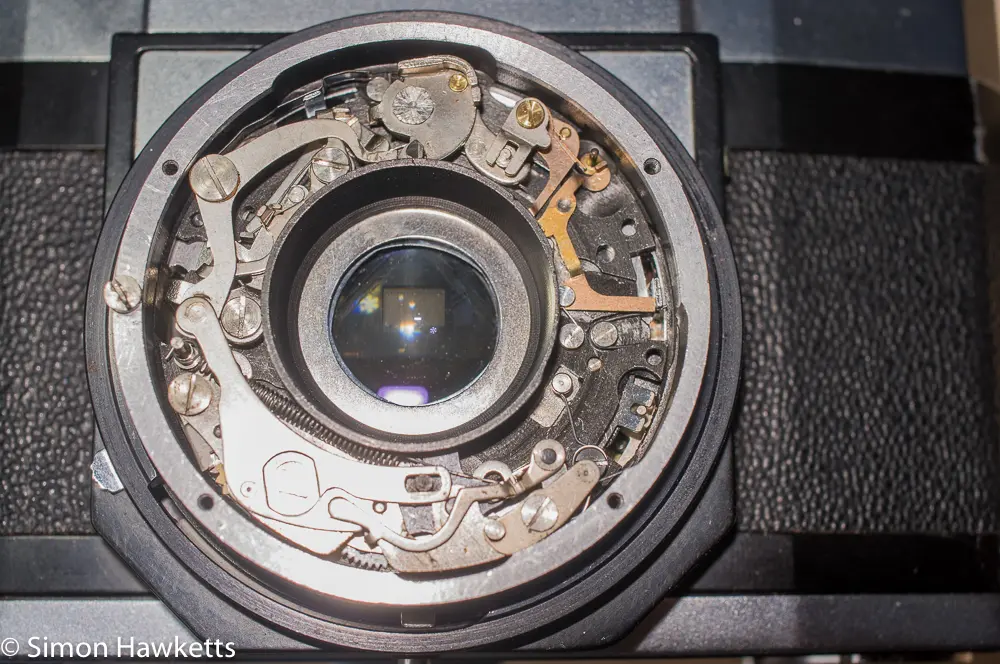
My Contaflex Alpha Camera
As I said above I bought this camera in a state described as ‘shutter working but erratic’ and paid £4 for it. When it turned up I tried the shutter and found that I could turn the film advance and bring the mirror down to its viewing position, and the shutter would cock, but when I released the shutter it made a click, but didn’t actually open.
I decided I’d need to get into the shutter to have a look at what the problem was, so I removed the front lens element (which is interchangeable on this model) and the trim and then a plate which held another lens element. As I undid the screws on the plate, I heard the camera open and close the shutter!
With that plate and the shutter speed selector plate off the camera I found that the shutter basically worked, although the slow speeds were a bit reluctant to finish. I therefore removed and cleaned the speed regulator (which was exactly the same as one I did a couple of days ago in a Franka Super Frankarette because the shutter is basically the same), and once that was replaced it worked perfectly. When I put the shutter back together however, it stopped working, and I wasn’t sure what the problem was.
After a few minutes removing the outer components, and examining the shutter I found that the shutter speed plate didn’t sit completely flat on the shutter, and discovered that it had to be slightly moved to allow one of the speed setting pins to correctly align with its slot in the speed plate. Once that was correctly aligned the top components went back on and the shutter worked again.
As I was refitting the outer rings which set the aperture and shutter speed, I found that the speed indicator dial and the aperture dial which show the settings to the user had been incorrectly assembled when I removed them, and the back indicator ring was unscrewed. So I think the situation was that another user had taken the camera apart and wasn’t sure how the parts went back together and disassembled it. This was further confirmed when I found that the rewind knob was unscrewed and loose.
With the shutter correctly working I had a look at the rest of the camera. It’s a little bit battered cosmetically with a bit of brassing on the front of the prism, some paint loss and a small amount of corrosion on the bottom. Also for some reason the strap lugs are missing (probably victims of the same dismantling which stopped the shutter working) and the viewfinder has a bit of dirt in, but not an excessive amount considering the age of the camera.
All in all, with the shutter repaired I think this is a decent camera, and the £4 I paid for it makes it excellent value for money.
Zeiss Ikon Contaflex Alpha Description
The Contaflex series was made by Zeiss for a long time and encompassed many model variations. This model, the Contaflex III, was made in 1956 and was essentially the same as the original Contaflex I made in 1953, but with the ability to remove and exchange the front lens element.
The camera is a conventional SLR shape, with a prism and mirror to allow the picture to be focused by viewing through the taking lens, but has a leaf shutter rather than the more conventional focal plane shutter fitted to most SLR’s.
The leaf shutter is fitted behind the lens and in front of the mirror, so this makes the design more complex, because when the image is viewed to focus and compose, the shutter needs to be open to allow the light to be directed to the viewfinder, but obviously this would allow light onto the film. In the Contaflex this problem is solved with a light shield which covers the film gate as the mirror is dropped down in place, protecting the film from being fogged while the viewfinder is in use. The video below shows how this works as the film is advanced and then the shutter fired.
The other thing you may notice from the video is that after the exposure the mirror stays in the up position, blocking the viewfinder. In order to compose the picture you have to wind the film forward to the next exposure which also winds the mirror down.
The exposure is controlled by the Prontor Reflex shutter and Pantar f/2.8 45 mm lens. The shutter has a range of speeds from 1 second to 1/300 sec, which sounds quite low to us these days, but at the time the camera was made, when film was typically 100 ASA for black & white and as low as 32 ASA for colour, it was fine. The lens is f/2.8 at it’s brightest, and can be stopped down to f/22 in really bright conditions.
In common with many cameras at the time, the shutter / aperture combination is locked together in the EV or Exposure Value system. This was a recently introduced system in the 1950s and allowed the exposure to be set and then several different combinations of the same exposure could be selected with a simple twist of the locked shutter speed / aperture control. This is no different to the modern ‘program shift’ mode offered with most DSLR cameras.
Once the exposure has been measured with a light meter, the aperture and shutter speed required is set as usual, although it may be necessary to press the button on the aperture scale to unlock the two dials. Once set, the aperture and shutter speed can be moved together and will maintain the same exposure but with different values. For example, f/11 at 1/30sec is the same as f/5.6 at 1/125sec or f22 at 1/8sec in terms of exposure, although each would give a different picture. It is up to the photographer to know the relative effect of opening the aperture or slowing the shutter speed on the picture they are going to take.
As I said earlier, the front element of the lens can be removed by pressing and holding the small red lever at the bottom of the lens and twisting the front element off. There were several different front lenses made for the Contaflex III which would change the focal length, maximum f-stop and / or closest focusing point.
The film is advanced with a knob at the top of the camera, which is more awkward to use than the fast action lever which many cameras, including the Contaflex had in later models. There is also a frame counter system build into the film advance which keeps track of the exposure count, and on the other side of the camera a film type reminder is built into the rewind knob.
The viewfinder is fitted with a central split image focusing aid which I always find welcome.
Update: As it turns out, although it was sold as a Contaflex III this camera is actually a slightly cheaper Contaflex Alpha model. I didn’t actually spot this but a reader, having viewed the pictures above spotted the difference and let me know. I’ve left the bulk of the text in the article the same because most of it is relevant since it is written with reference to the camera I have, but to set the record straight this is a Contaflex Alpha.
Zeiss Contaflex Alpha specifications
- Zeiss Ikon Contaflex Alpha 35mm slr
- Leaf Shutter fitted behind lens and in front of mirror
- 1sec to 1/300sec + B speeds
- Non instant return mirror – must be wound down for each exposure
- EV exposure system
- 45mm f/2.8 Pantar lens fitted – interchangeable front element
- Self timer option
- X & M flash sync at all speeds
- Flash sync socket
- Split image focusing aid in viewfinder
- Frame counter around film advance
- Bottom half of case removes for loading of film
- Table stand built into case
- Film type reminder built into rewind knob
- Camera ser no: M6066
- Lens ser no: 3357643
- Manual available here
Discover more from Everything Vintage
Subscribe to get the latest posts sent to your email.

